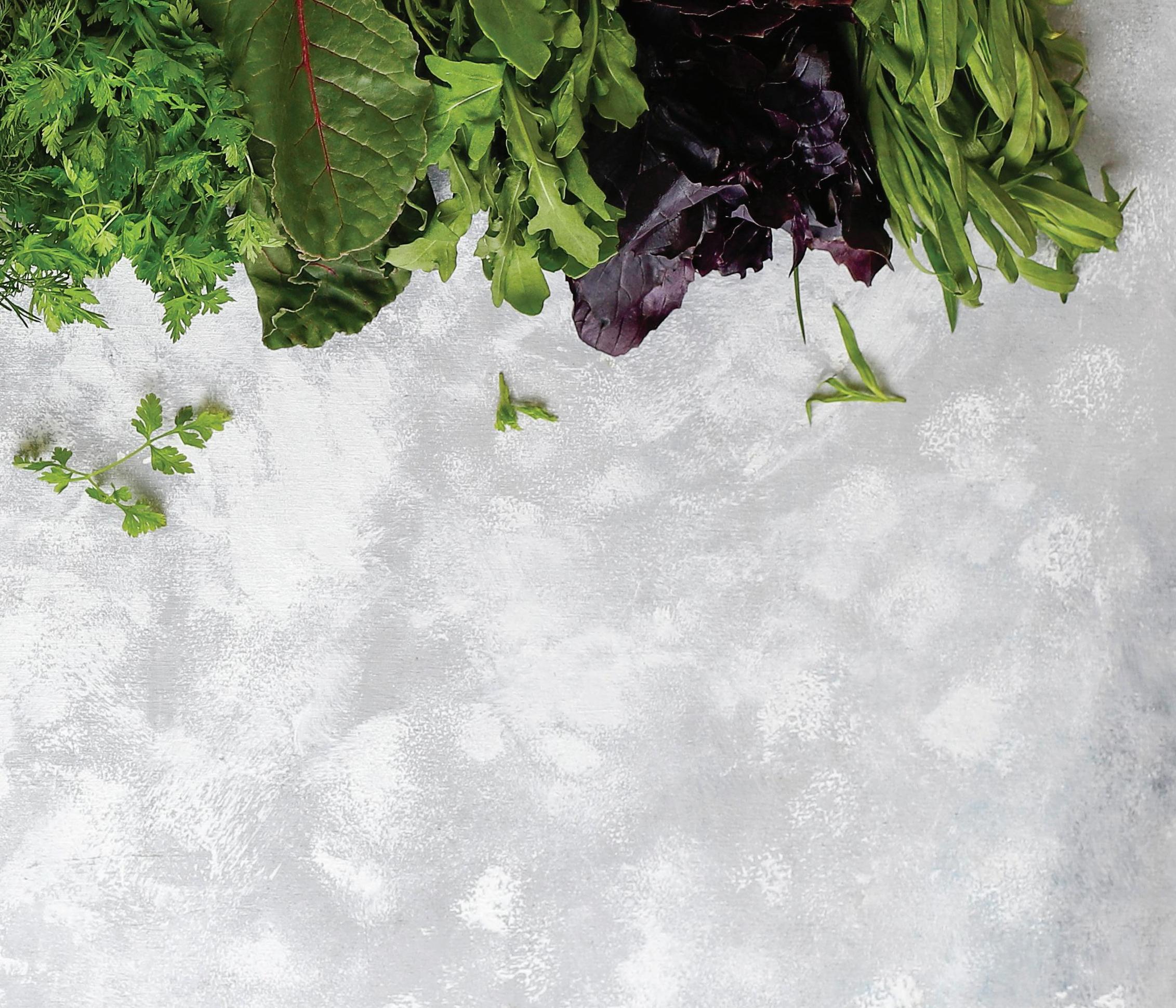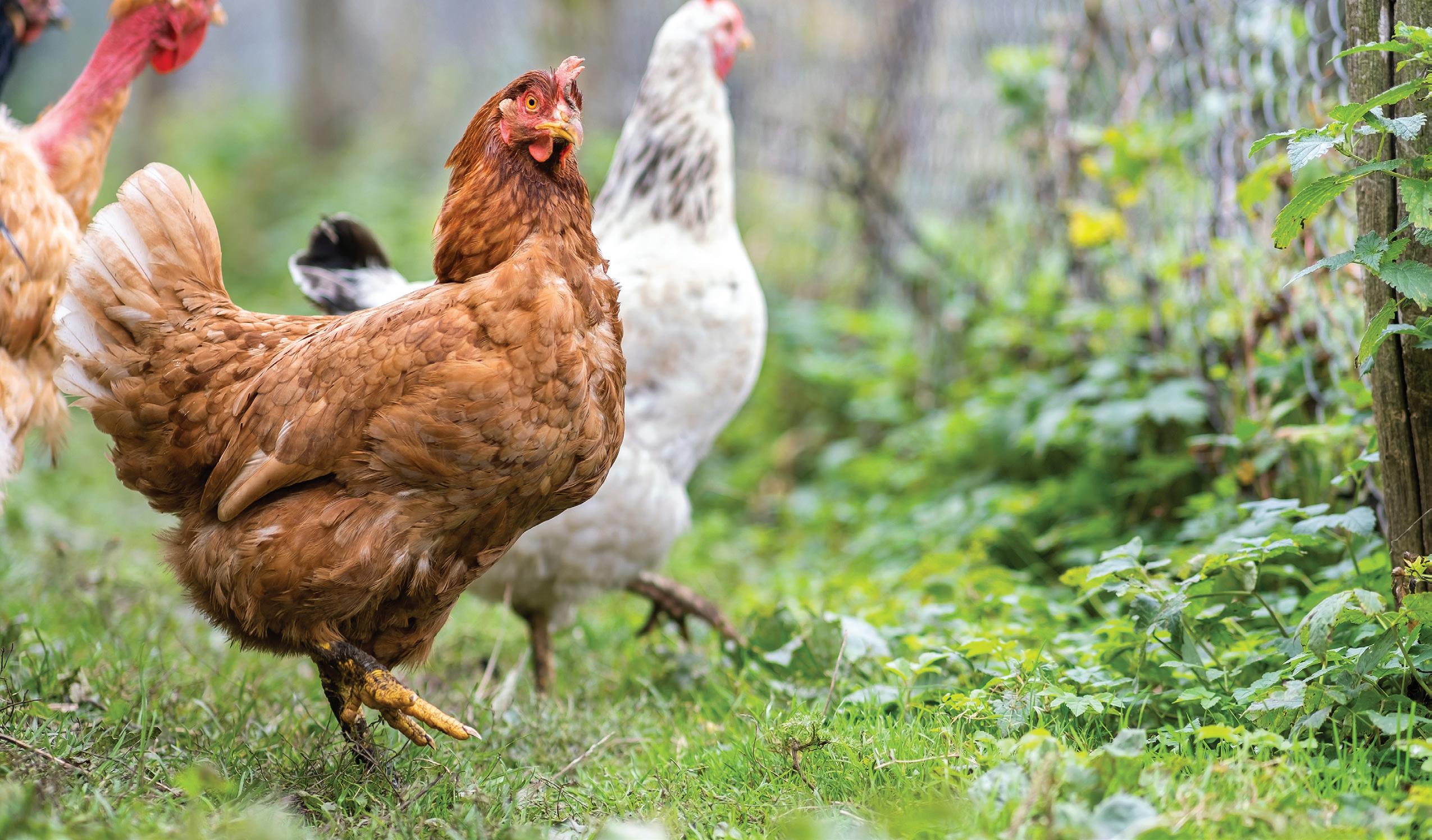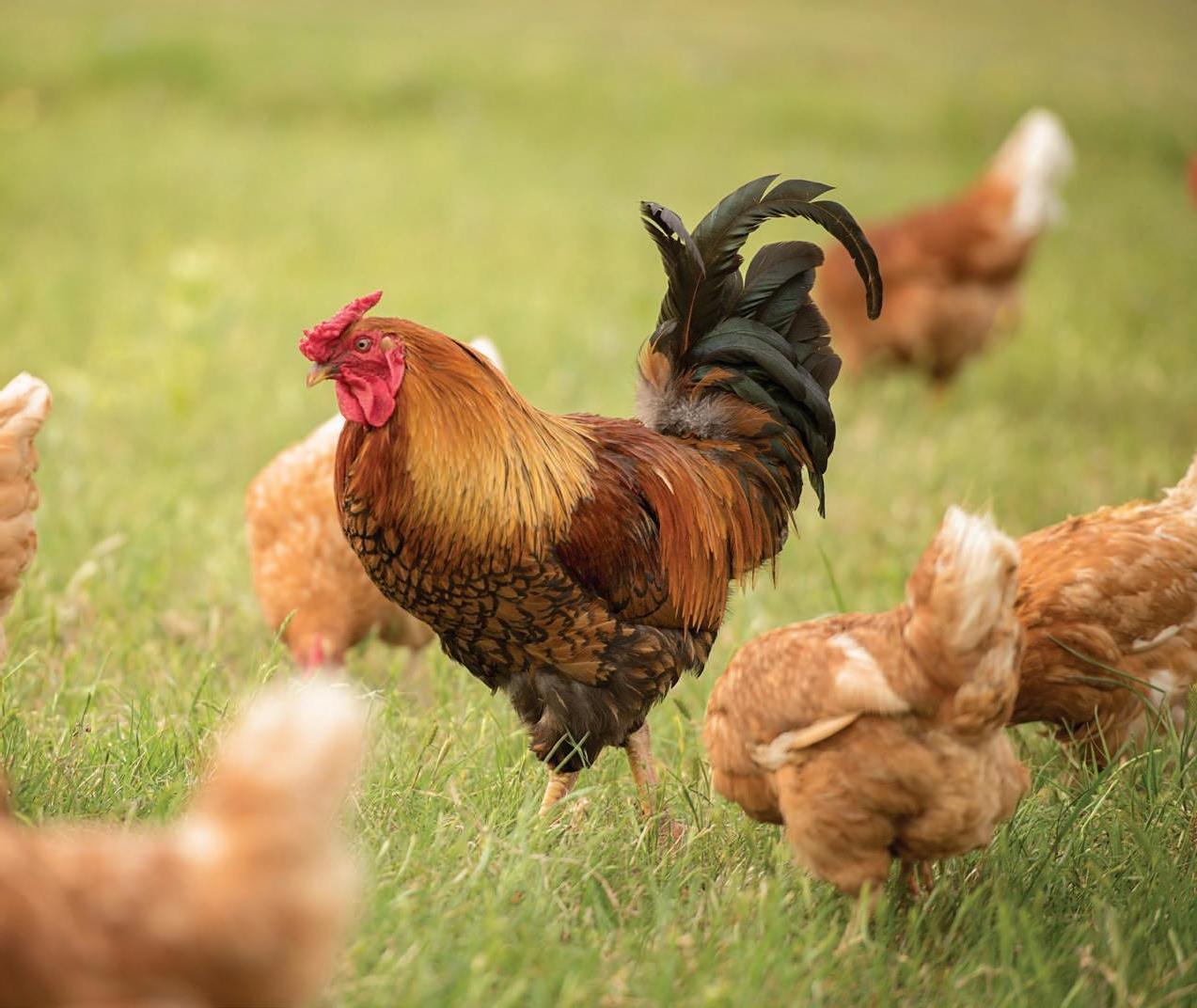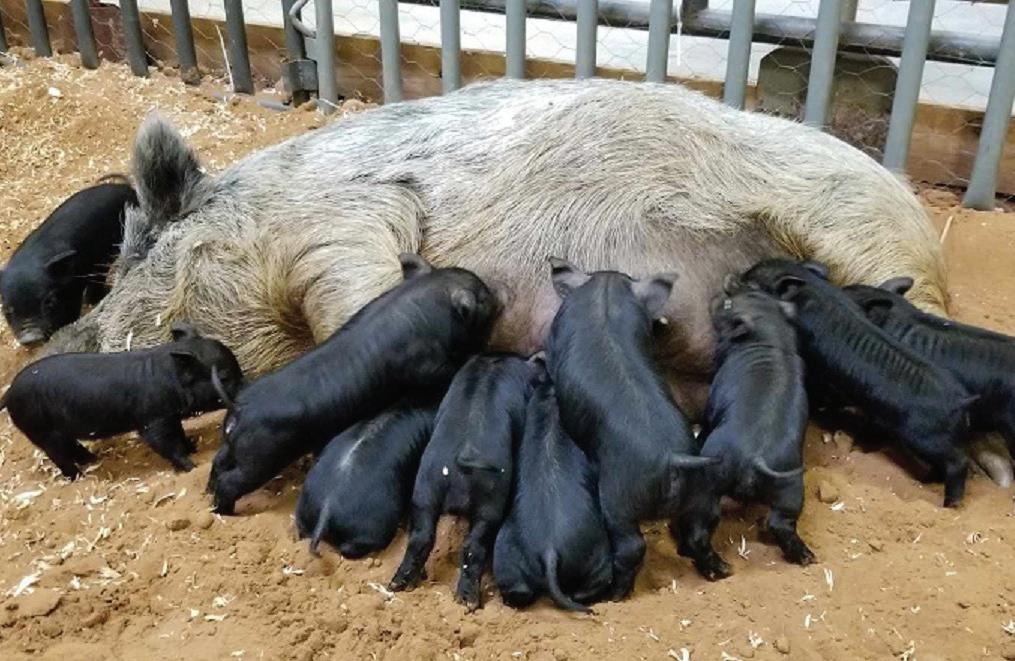
12 minute read
GardenThe Healing
Written by CINDY MEREDITH | Owner of The Herb Cottage
Many herbs we know as flavorful culinary herbs also have surprising health benefits. Many of these herbs are easily grown in our gardens as annuals or perennials. Many of the health benefits of herbs can enjoyed simply by using herbs on a regular basis in our cooking and teas. Here is a list of 10 herbs that are healthy, flavorful and love our Texas gardens.
Lemon balm, Melissa officinalis
Lemon balm is a perennial herb in the mint family. It is a versatile medicinal, culinary and personal care herb. One common way to use Lemon balm is to brew the fresh or dried leaves into a tea. It has antispasmodic, antiviral and sedative properties. It is a soothing stomach tonic, digestive aid and gentle natural sleep and anti-anxiety aid.
The leaves and essential oil can prevent inflammation, suppress bacteria and fungi and have antioxidant properties. It is commonly used in creams and salves to help heal skin abrasions and sores from chicken pox and shingles. A cream or salve containing Lemon balm will tone and brighten the skin.
In the bath, fresh leaves, often added with rose petals and lavender, will add a soothing quality to the soak. Steep the fresh leaves overnight in water to make a gentle and lightly lemon scented after bath or shower spray.
In our Texas gardens, lemon balm grows well in almost any garden soil and likes either dappled light or afternoon shade. In the very hot summer months, water it when it looks droopy. Lemon balm is also a good container plant. It does well in a large container kept out of the hottest sun. Water when needed. To have access to lemon balm tea all year, even during the winter when the plant is dormant, harvest fresh leaves and dry them- see instructions, below. When dried, place the leaves in a sealed container and store in a cool, dark place.
You can make lemon balm tea- see directions below- drink it hot or iced- or make a strong tea and freeze it in ice cubes. Add the cubes to water or to any tea that you have for a bright, lemony flavor.
Lemon balm will flower in late summer, producing flower stalks with tiny white flowers much loved by bees and butterflies. After flowering and due to the heat at that time of year, the plant will often look stressed, bedraggled and in need of a trim. You can cut the plant back as much as you like to create new growth as the cooler days of fall arrive.
Lovely lemon balm belongs in all our herb gardens and deserves to be used and enjoyed in its many forms.
Tulsi, Ocimum sanctum, Ocimum tenuiflorum
Tulsi, also known as Sacred or Holy Basil, is one of the best adaptogenic, or balancing, herbs available. An adaptogenic herb affects the central nervous system in a positive way by both relaxing and stimulating the nervous system. Herbalist Maria Noel Groves (2016) says it’s like “yoga or meditation in a cup of tea” (p. 53).
Tulsi supports the body during times of stress and works to balance the negative effects stress has on emotional and physical health. It is an uplifting herb during the winter when seasonal affective disorder can affect us. The herb is gently stimulating while also relaxing the muscles and the mind. Taken as a tea, hot or iced, alone or mixed with other herbs such as chamomile, mint or green
tea, Tulsi is a flavorful and delicious way to care for the body and mind.
It is easy to grow in the warm months and to preserve by drying to have during the winter.
Sage, Salvia offcinalis
Garden Sage is a short lived perennial in most of Texas. Aside from its culinary value in traditional Yankee Breakfast Sausage and Thanksgiving dressing with turkey, sage is a helpful herb when dealing with a sore throat, cough or upper respiratory congestion. Taken as a tea made with fresh or dried leaves, sage helps relieve a sore throat, calm a cough and just inhaling the steam from a cup of sage tea can relieve respiratory congestion.
Sage is full of antioxidants. It is sometimes made into a mouth wash where its anti-fungal properties help decrease plaque on the teeth and freshen the breath. One traditional use of sage is as a poultice to treat swelling or bruising.
Sage grows well in ordinary garden soil in morning sun with afternoon shade in South and Central Texas. It can be harvested any time there are enough leaves to be taken from the plant. It is winter hardy.
Yarrow, Achillea millefolium
Yarrow is a native, perennial herb with soft, green, ferny leaves. Yarrow has many traditional uses. The leaves are antiseptic and can be used to staunch bleeding and prevent infection. It was used during the Civil War, since the plant was readily available near many battle sites. The flowers have been used in beer and mead (honey wine) making to add bitterness, much like hops are used. Yarrow flower tea can help digestion by soothing the gastrointestinal tract.
Yarrow will grow in full sun even in our Texas summer heat. The plant will spread a bit in the garden, but can easily be dug up and replanted, shared or removed. The tall while flower stalk shows in late Spring or early Summer. The flower brings beneficial insects to the area, including butterflies and honey bees.
Mullein, Verbascum thapsus
Mullein is a biennial plant with large, soft, downy leaves and a tall flower stalk. It was introduced into America by the early colonists from England and has been a staple in folk medicine and home remedies. Most commonly, the fresh or dried leaves are made into a flavorful tea to combat respiratory infections, coughs and congestion. It also acts as an expectorant to make coughs more productive in expelling mucus.

There is some evidence that Mullein might proved to be anti-viral. Some very early test-tube tests have shown it to be effective against influenza virus but much more study needs to be done. Drinking Mullein tea while ill, however, would not be detrimental. The large, soft leaves have been used as poultices to staunch bleeding in topical wounds. They have also been used as “prairie toilet paper” out in the wilderness.
Mullein is easy to grow in ordinary garden soil. It does best with mostly sun, but can take some shade. The first year it grows the leafy rosette, then it puts up a tall flower stalk with little yellow flowers opening along its length. After the flowers fade, the seeds are formed in pods along the stalk. If you don’t want numerous mullein plants to sprout in your garden, cut off the stalk before the flowers dry.
If you’re feeling adventurous, dip the completely dried, even from last year, flower stalk in several coats of wax and use it as a torch. Fun! (https:// 3herbmamas.wordpress.com/tag/mullein-stalk-torches/)
Lavender, Lavandula spp.
Lavender is an herb used mostly for its scent. From its use in perfumes and body care products to its many medicinal and health benefits, it is one powerful herb.
There might be no herb used more in aromatherapy than Lavender. Its scent is calming and sedative, yet uplifting as well. It is said to be useful to combat anxiety, stress and insomnia. Lavender is one of the few healthful herbs that is taken in other than oral form. It is mostly used in an aromatherapy procedure, meaning the scent is conveyed into the body through the nostrils. Massage oil, salves, infusers and pot pourri are some of the ways the scent of lavender is transmitted.
Lavender Essential Oil has numerous benefits and can be applied directly to the skin. It is very mild. The oil is said to be anti-fungal and anti-bacteria. Salves or creams made with lavender are healing, cooling and help prevent infection. The EO is effective on skin fungal issues.
Lavender buds are sometimes used in cooking- often in cookies, cakes and brownies. Lavender Lemonade is a popular summer beverage. A traditional French bouquet garni, or bouquet of herbs, contains lavender along with other savory herbs.
Lavender can be tricky to grow here in Texas due to our high heat and humidity during the summer. Give your lavender full sun if planted in the ground, well draining soil and good air flow. Don’t crowd it with other plants. Gravel or rock mulch around the plant can benefit drainage and to keep the soil from splashing up on the plant. In containers, where lavender does well, be sure to give it very well draining potting mix, water it when its dry and give it some afternoon shade. Even so, lavender is not a long lived perennial here.
Feverfew, Tanacetum parthenium
Feverfew is a somewhat tender perennial in the chrysanthemum family. It is a cheery plant with small yellow and white flowers on a bushy plant. Feverfew tea, made from the dried or fresh leaves, has been used for centuries to relieve minor headaches as well as migraines. The scientific conclusion, however, is that the effect of feverfew on migraines is only slightly better than a placebo. It has been used in folk medicine for other complaints and benefits as well: lowering fevers, blocking arthritis pain, lowering blood pressure and stimulating the appetite.
Feverfew has been shown to have anti-inflammatory properties. The tea can be applied as a dressing to reduce skin inflammation due to bites, rashes and abrasions.
People who have an allergic reaction to ragweed, should stay away from feverfew.
It is a pretty plant in the garden with its dark green, finely divided leaves and small, daisy-like flowers. It grows in average garden soil with occasional watering. Most years it will survive winter cold. Butterflies and bees are attracted to the flowers.
Vetiver Grass, Vetiveria zizanioides
Vetiver Grass is a tropical grass related to Llemon grass and grows in a similar fashion. It is the roots of the Vetiver that have been used for centuries for various purposes. The roots are processed into Essential Oil which is used in perfumes, soaps and other body care products. It is considered an antiseptic and anti-inflammatory herb. It is soothing and helps reduce body heat. The EO can be added to salves to help heal skin abrasions, bites and dry and cracked skin. Added to creams, Vetiver EO helps keep skin healthy and vibrant. The EO also has insect repellent properties.
The dried roots are often simply added to a jug of cool drinking water and taken throughout the day to offset the effects of extreme heat during the summer. Vetiver tea, also made from the dried roots, is drunk for its health benefits.
Vetiver is very easy to grow, but it puts its roots down very deep into the soil, so is difficult to move once established. It is happy growing in a large container. It is completely non-invasive, does not produce viable seed, nor does it run like some types of bamboo. It likes full sun all day for best growth. It is drought tolerant once established, yet can grow in boggy conditions as well. Due to its extensive root system, it is often grown for erosion control near stream banks, on hillsides and shorelines.
Lemon Grass, Cymbopogon
Lemon Grass is a tropical grass originating in India with an intense lemon flavor that is often used in Thai and other southeast Asian cuisines. The antioxidant health benefits of Lemon Grass are due to its flavonoids and phenolic compounds. It is an effective anti-bacterial and anti-fungal agent. Tea made from fresh or dried leaves is delicious besides being healthy. A strong infusion of the tea can also be used as a wash for wounds and other skin irritations.
Lemon grass grows easily once the weather is warm. It likes rich soil, sun and moisture. It is not generally considered winter hardy, so it’s best to harvest the leaves during the warm months of its growing season and dry them for later use. It also does well growing in a large container that can then be protected during the winter cold.
Italian Basil, Ocimum basilicum
Italian Basil is probably the most popular home grown herb for its flavor and use in Italian style cooking. It also has many health benefits. It is full of vitamins, minerals and antioxidants that help fight free radicals in the body that can lead to cell damage. Some studies have suggested basil can help lower cholesterol and triglycerides and improve blood flow.
Essential oils in basil, including eugenol, linalool, and citronellol, can help to fight inflammation in the body. These anti-inflammatory properties can help to lower the risk of inflammatory conditions such as arthritis and heart disease. To get the health benefits of basil, use it often in cooking. Use the fresh leaves if possible, as they have more of the health benefits than the dried ones.
Basil is easily grown in a sunny bed with ordinary garden soil. It likes moisture, so grow it where you’ll see it and water it. Harvest the leaves often by pinching off or cutting the stem, then removing the leaves for use. This way, you will delay flowering of the plant, which signals the plant to produce seed and shut down leaf production.
Conclusion
I hope you will try growing some of these herbs in your gardens or containers this summer and enjoy all the healthful and flavorful benefits of these much loved and useful plants.
Herb teas don’t have to be medicinal for you to enjoy them. After a stressful day or for a natural pick-me-up, a cup of herbal tea is soothing and refreshing.
Use approximately 2 teaspoon fresh herbs for each cup (about 6-8 ounces). Pour boiling water over your fresh herbs (you may slightly bruise the leaves to help release their flavors) in a china or glass pot. Metals, including stainless steel, may alter the flavor of the tea. Steep for only 5 to 10 minutes for best flavor. The tea should be lightly colored and mild. Pour and enjoy plain or with a little dollop of honey or a squeeze of lemon.
You may use dried herbs for tea also. Just remember dried herbs have a stronger flavor so only use about 1 teaspoon per cup and proceed as for fresh herbs.

Visit cvctx.com/fiber and discover if your home or office is in our fiber zone.

Whether for school, work or life, our reliance on digital connections has increased dramatically over this past year — with households spending more-and-more time online. With Colorado Valley Communications’ Fiber service, you can enjoy a more reliable network, high-speed connectivity and increased bandwidth to help keep up with the added demand. 979.242.5911 I 800.242.5911
cvctx.com







